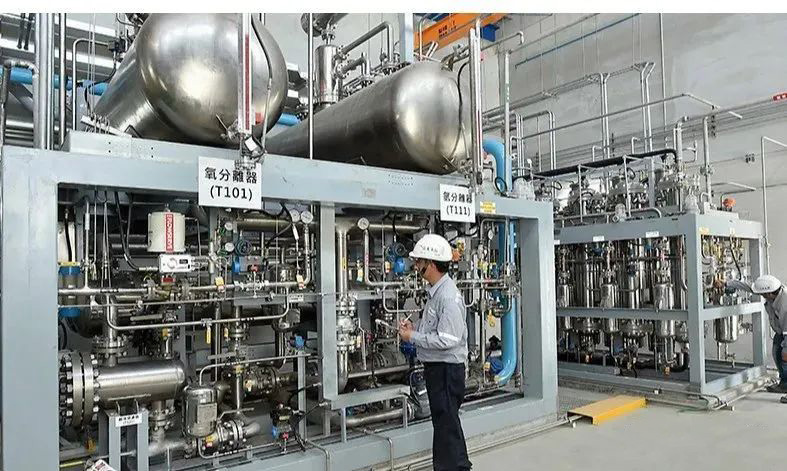Analysis of the principles of water electrolysis for hydrogen production technology:
Hydrogen production by water electrolysis is the process of breaking down water into hydrogen and oxygen by means of an electric current. This process usually takes place in an electrolyser involving two electrodes, anode and cathode. An electric current is passed through the aqueous solution, causing the water at the anode to oxidise to form oxygen, while the water at the cathode is reduced to form hydrogen.
Main types of technology
Alkaline water electrolysis (ALK): Uses a liquid electrolyte (e.g., KOH or NaOH). Equipment costs are low, but electrolysis efficiency and durability are relatively low.
Proton Exchange Membrane Water Electrolysis (PEM): Uses solid polymer membranes with the advantages of high efficiency and compactness, but with high equipment costs and a short lifespan.
High-temperature Solid Oxide Water Electrolysis (SOEC): operates at high temperatures and is highly efficient, but requires an additional heat source, increasing energy consumption.
Anion Exchange Membrane Water Electrolysis (AEM): combines the advantages of ALK and PEM, still in the R&D stage, with good development prospects.

Catalysts
Catalysts play a key role in the process of hydrogen production by water electrolysis, common catalysts include:
Precious metal catalysts: such as platinum, rhodium, etc., with high catalytic activity, but at a higher cost.
Non-precious metal catalysts: e.g. nickel, iron, etc., with low cost, but may have poor catalytic performance.
Economy
The economy of hydrogen production by water electrolysis is affected by multiple factors such as the cost of electricity, the cost of electrolysers and the cost of catalysts. With technological advancement and large-scale production, the overall cost is expected to decrease.
It can be said that the market outlook for water electrolysis hydrogen production is very optimistic and is one of the important directions for future energy development.
Renewable Energy Integration: As the cost of renewable energy (e.g., wind and solar energy) decreases, hydrogen production by water electrolysis can effectively utilise these energy sources and promote the production of clean hydrogen.
Policy support: Countries around the world have introduced policies to support the development of hydrogen energy, especially the production of green hydrogen, which provides a favourable development environment for water electrolysis technology.
Technological advancement: Water electrolysis for hydrogen production is constantly advancing, with efficiency and cost gradually being optimised, and improvements in catalysts and materials enhancing the economics of the system.
Growing Market Demand: The growing demand for hydrogen in a variety of sectors, including industry, transport and energy storage, is driving the market demand for hydrogen from water electrolysis technology.
Environmental Sustainability: As a clean energy source, hydrogen has significant advantages in reducing carbon emissions and is in line with the global trend of green development.
Taken together, the water electrolysis hydrogen market is expected to continue to grow in the coming years and become an important pillar of the hydrogen economy.